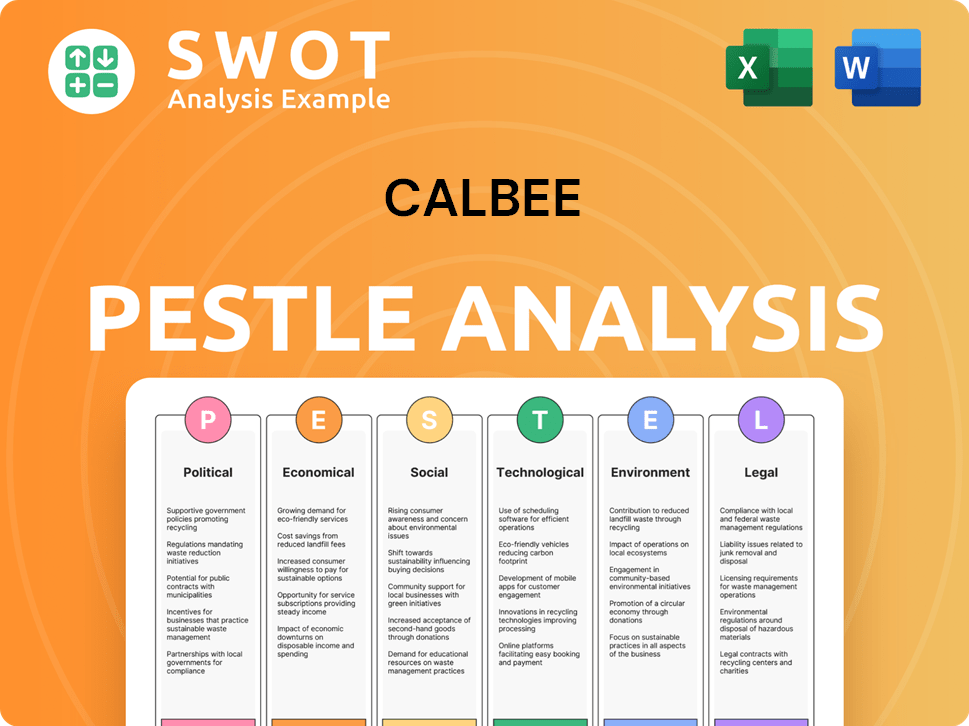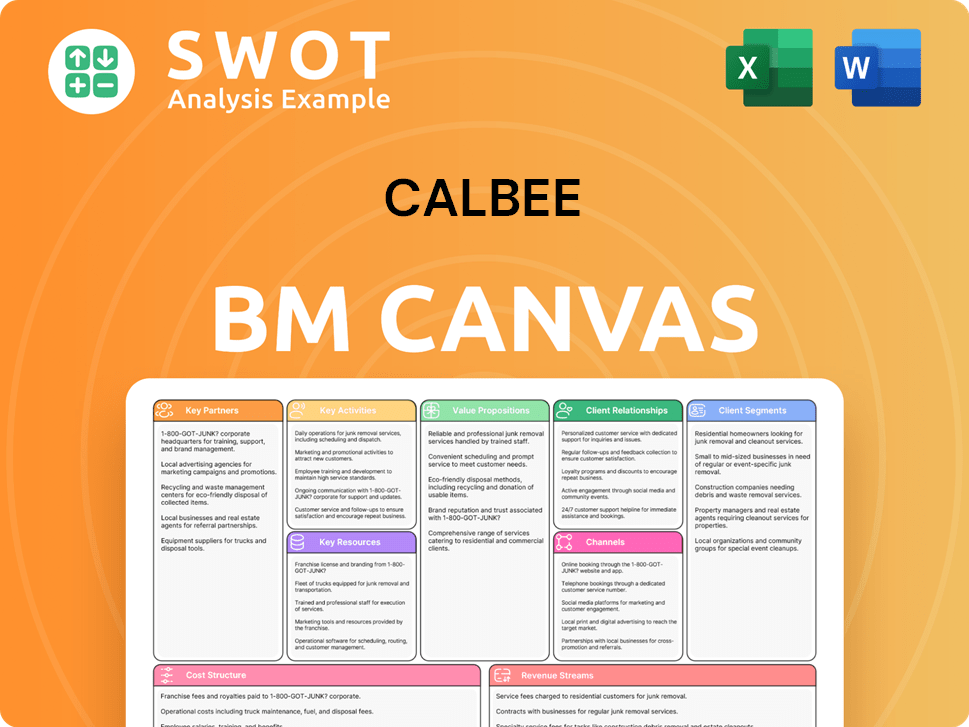Calbee Bundle
How Did Calbee Rise to Become a Global Snack Food Powerhouse?
Explore the fascinating Calbee SWOT Analysis to uncover the secrets behind this Japanese snack food giant's success. From its humble beginnings in post-war Japan, Calbee, a company built on a foundation of health and innovation, has transformed the snack industry. Discover the key moments and strategic decisions that propelled Calbee from a local initiative to a global leader.

Calbee's Calbee history is a compelling narrative of resilience, innovation, and strategic foresight. Founded by Takashi Matsuo in 1949, the Calbee company quickly adapted to meet the needs of a changing world. Understanding the Calbee company origin and the evolution of its Calbee snack food brands provides valuable insights into its enduring popularity and market dominance, including its iconic Potato chips.
What is the Calbee Founding Story?
The Calbee history began in the aftermath of World War II, a time of scarcity and hardship in Japan. Founded on April 30, 1949, by Takashi Matsuo, the company emerged from a desire to address the critical need for nutritious food in a devastated nation. This marked the genesis of what would become a major player in the Calbee company.
Matsuo's vision was to leverage available resources to create beneficial snack products. His initial venture, Matsuo Food Processing Co., Ltd., focused on transforming surplus food aid into edible goods. This approach was a direct response to the widespread malnutrition and food shortages that plagued post-war Japan, setting the stage for the Calbee company origin.
The company's evolution from its humble beginnings to its current status is a testament to its adaptability and commitment to its founding principles. The Calbee company's commitment to innovation and its response to societal needs have been central to its success.
Takashi Matsuo established Matsuo Food Processing Co., Ltd. on April 30, 1949, in Hiroshima, Japan. His mission was to combat post-war food shortages and malnutrition through nutritious products. The company's initial product, 'Calbee Caramel,' was made from mixed grains and Japanese yam starch.
- The name 'Calbee' was derived from 'calcium' and 'vitamin B1,' reflecting the company's health-focused mission.
- In 1955, the company changed its name to Calbee Confectionery Co., Ltd., and later to Calbee, Inc. in 1973.
- Matsuo's background in the rice bran business and his vision of utilizing untapped food resources shaped the company's core values.
- The difficult economic and social conditions of post-war Japan heavily influenced the company's establishment.
Calbee SWOT Analysis
- Complete SWOT Breakdown
- Fully Customizable
- Editable in Excel & Word
- Professional Formatting
- Investor-Ready Format

What Drove the Early Growth of Calbee?
The early growth of the Calbee company was marked by strategic product innovation and significant market expansion. This period saw the introduction of iconic products and the establishment of a global footprint. The company's focus on quality and adaptation to market demands played a crucial role in its early success and set the stage for future growth.
Following the success of Calbee Caramel, the company introduced Kappa Arare in 1955, expanding its presence in the Japanese snack market. The launch of Kappa Ebisen in 1964, a shrimp cracker, was a pivotal moment, achieving annual sales of ¥10 billion. This product's popularity at the International Confectionery Expo in New York in 1967 fueled Calbee's international ambitions.
Calbee began exporting to Southeast Asia and Hawaii in 1966, followed by North America in 1967. To support its global presence, Calbee America, Inc. was established in California in 1970. This marked the company's first overseas base, demonstrating its commitment to international growth. The company's expansion into overseas markets was a key strategy.
Domestically, Calbee expanded its manufacturing footprint by opening factories like the Utsunomiya Factory in 1968 and the Chitose Factory in 1969. These expansions increased production capacity and ensured fresh product delivery across Japan. The relocation of headquarters to Tokyo in 1973 further reflected the company's nationwide and global aspirations.
The 1970s saw Calbee enter the potato chip market with 'Potato Chips Lightly Salted' in 1975. Despite initial challenges, the company adapted by establishing factories closer to markets. Calbee also diversified its product range, introducing Sapporo Potato in 1972 and Pro Baseball Chips in 1973. These moves helped solidify Calbee's position in the Japanese snack food industry.
Calbee PESTLE Analysis
- Covers All 6 PESTLE Categories
- No Research Needed – Save Hours of Work
- Built by Experts, Trusted by Consultants
- Instant Download, Ready to Use
- 100% Editable, Fully Customizable

What are the key Milestones in Calbee history?
The Calbee history is marked by significant milestones that have shaped its journey. From its inception, the Calbee company has consistently evolved, adapting to market demands and consumer preferences, establishing itself as a prominent player in the Japanese snack food industry.
| Year | Milestone |
|---|---|
| 1949 | Calbee company origin as a food manufacturer in Hiroshima, Japan. |
| 1964 | Launched Kappa Ebisen, a shrimp-flavored snack, which became a major success. |
| 1975 | Introduced Potato chips, expanding its product line and market presence. |
| 1991 | Launched Frugra (Fruits Granola), entering the breakfast food market. |
| 2018 | Acquired Seabrook Crisps in the UK. |
| 2019 | Acquired Warnock Food Products in the US. |
| 2020 | Acquired Potato Kaitsuka Co., Ltd., strengthening its position in the health-conscious segment. |
| 2025 | Calbee America launched a new R&D Innovation Center in Madera, California. |
Calbee has consistently focused on innovation in its products and processes. The company was an early adopter of palletization in the confectionery industry, optimizing its supply chain, and invested in advanced technologies like REV™ machines for 'better-for-you' snacks.
The introduction of Kappa Ebisen in 1964 was a major innovation, utilizing fresh shrimp and establishing a new product category. This snack quickly gained immense popularity, becoming a cornerstone of Calbee's product line.
The launch of Potato chips in 1975 further diversified Calbee's offerings. This move solidified Calbee's position as a leading brand in the Japanese snack market.
The introduction of Frugra (Fruits Granola) in 1991 showcased Calbee's ability to adapt to changing consumer lifestyles. This product gained traction as a convenient and nutritious breakfast option.
Calbee was an early adopter of palletization in the confectionery industry, introducing rental pallets in its Kyoto plant in 2015. This optimized its supply chain.
In 2020, Calbee acquired additional 10kW REV™ machines for the commercial launch of REV™-dried fruit and vegetable snacks. This focused on 'better-for-you' options.
In January 2025, Calbee America launched a new R&D Innovation Center in Madera, California. This aimed for double-digit annual growth by accelerating product development.
Calbee has faced several challenges, including market downturns and competitive pressures. The domestic potato chip market saw a decline in market share due to rival price cuts, but the company responded with strategic pivots.
The Calbee market share in the domestic potato chip market declined from over 75% to 60.4% by fiscal year 2010 due to rival price cuts. The company responded with price adjustments and product relaunches.
Calbee navigated economic pressures and rising raw material costs, leading to price increases on its snacks and cereals by as much as 20% in 2022. This impacted consumer prices.
Acquisitions, such as those of Seabrook Crisps and Warnock Food Products, presented integration challenges. These required restructuring, rebranding, or leadership changes.
Intense competition in the snack food market has consistently challenged Calbee's market position. Rivals often implement aggressive pricing strategies.
Rising costs of raw materials, particularly for key ingredients like potatoes and shrimp, have put pressure on Calbee's profit margins. This has led to price adjustments.
Global events and logistical issues have caused supply chain disruptions. These disruptions have impacted the availability of ingredients and increased operational costs.
Strategic acquisitions have been key to Calbee's expansion and diversification, with a focus on health-conscious segments. The company's commitment to quality and natural ingredients has remained a consistent strength. For more insights into Calbee's marketing strategies, you can explore the Marketing Strategy of Calbee.
Calbee Business Model Canvas
- Complete 9-Block Business Model Canvas
- Effortlessly Communicate Your Business Strategy
- Investor-Ready BMC Format
- 100% Editable and Customizable
- Clear and Structured Layout

What is the Timeline of Key Events for Calbee?
The Calbee company has a rich history, beginning in 1949 as Matsuo Food Processing Co., Ltd. It has evolved from a small Hiroshima-based company to a global snack food giant. This evolution is marked by key product launches, strategic expansions, and a commitment to innovation in the Japanese snack market and beyond.
| Year | Key Event |
|---|---|
| 1949 | Founded as Matsuo Food Processing Co., Ltd. by Takashi Matsuo in Hiroshima, Japan. |
| 1955 | Company name changed to Calbee Confectionery Co., Ltd., reflecting the popularity of its Calbee Caramel product. |
| 1964 | 'Kappa Ebisen' (shrimp crackers) launched, becoming a major hit. |
| 1966 | Began exporting products to overseas markets, including Southeast Asia and Hawaii. |
| 1970 | Calbee America, Inc., the first overseas subsidiary, established in North America. |
| 1973 | Headquarters relocated to Tokyo, and company name changed to Calbee, Inc.. |
| 1975 | 'Potato Chips' launched, becoming a flagship product. |
| 1980 | Calbee Tanawat Co., Ltd. established in Thailand. |
| 1988 | Entered the cereals market with the launch of cereal products in the Chukyo area. |
| 1991 | 'Fruit Granola' (later 'Frugra') launched. |
| 2018 | Acquired UK company Seabrook Crisps. |
| 2019 | Acquired Warnock Food Products in the US. |
| 2020 | Acquired Potato Kaitsuka Co., Ltd., entering the sweet potato business. |
| 2024 | New Setouchi Hiroshima Factory expected to be operational, focusing on automation and efficiency. |
| 2025 | Calbee America, Inc. launches a new R&D Innovation Center in Madera, California, to accelerate product development. |
Calbee is focused on sustained growth through strategic initiatives. The company aims to enhance domestic profitability through price and content revisions, brand strengthening, and value chain optimization via digital transformation. Overseas expansion is a key focus, with significant investments planned for North America and China.
Calbee intends to invest approximately 140 billion yen (US$1 billion) in automation, M&A, and facility upgrades. About 80 billion yen will be allocated for M&A to expand international operations and 60 billion yen for productivity enhancement through automation and ESG measures. The goal is to raise overseas revenue to 30%-35% by 2025 from 23% in March 2022.
Calbee is actively pursuing ventures into new food categories, such as sweet potatoes, and developing healthy snack options. Partnerships, such as the one with Pegasus Tech Ventures in 2024, aim to connect Calbee with startups developing breakthrough products and technologies, fostering innovation in healthy snack foods and new production techniques.
For the fiscal year ending March 31, 2025, Calbee projects consolidated net sales of ¥322,564 million (up 6.4%) and an operating profit of ¥29,066 million (up 6.5%), indicating continued growth. The company is also emphasizing a shift to management that prioritizes business growth and added value creation, setting ROIC as a company-wide management indicator and aiming for a capital cost of approximately 6%.
Calbee Porter's Five Forces Analysis
- Covers All 5 Competitive Forces in Detail
- Structured for Consultants, Students, and Founders
- 100% Editable in Microsoft Word & Excel
- Instant Digital Download – Use Immediately
- Compatible with Mac & PC – Fully Unlocked

Related Blogs
- What is Competitive Landscape of Calbee Company?
- What is Growth Strategy and Future Prospects of Calbee Company?
- How Does Calbee Company Work?
- What is Sales and Marketing Strategy of Calbee Company?
- What is Brief History of Calbee Company?
- Who Owns Calbee Company?
- What is Customer Demographics and Target Market of Calbee Company?
Disclaimer
All information, articles, and product details provided on this website are for general informational and educational purposes only. We do not claim any ownership over, nor do we intend to infringe upon, any trademarks, copyrights, logos, brand names, or other intellectual property mentioned or depicted on this site. Such intellectual property remains the property of its respective owners, and any references here are made solely for identification or informational purposes, without implying any affiliation, endorsement, or partnership.
We make no representations or warranties, express or implied, regarding the accuracy, completeness, or suitability of any content or products presented. Nothing on this website should be construed as legal, tax, investment, financial, medical, or other professional advice. In addition, no part of this site—including articles or product references—constitutes a solicitation, recommendation, endorsement, advertisement, or offer to buy or sell any securities, franchises, or other financial instruments, particularly in jurisdictions where such activity would be unlawful.
All content is of a general nature and may not address the specific circumstances of any individual or entity. It is not a substitute for professional advice or services. Any actions you take based on the information provided here are strictly at your own risk. You accept full responsibility for any decisions or outcomes arising from your use of this website and agree to release us from any liability in connection with your use of, or reliance upon, the content or products found herein.